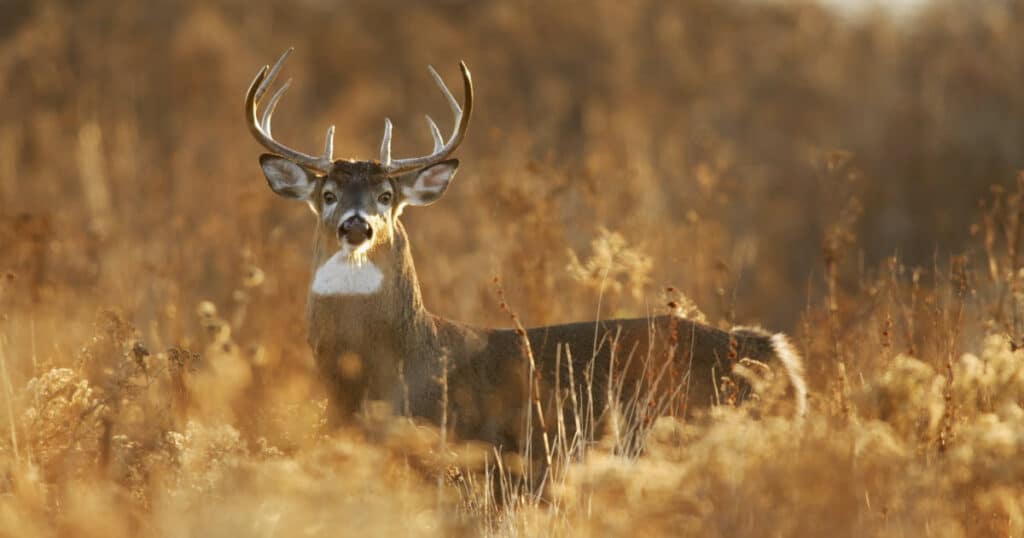White Tailed Deer (Odocoileus virginianus) is the most vigorous and well-distributed wild ungulate in North America. Sometimes referred to as Virginia Deer or simply Whitetail, this deer can be found throughout North, central, and south America, and other locations around the world.
Famous for its title role in Bambi, White Tailed Deer are a sometimes unavoidable part of life in America – including as a suburban pest, and driving hazard.
On this page we’ll share facts, information, photos and more so you can get to know this beautiful type of deer.
White Tailed Deer Size
Table of Contents
Toggle- Head-Body Length – about 180 cm
- Shoulder height – 90 to 105 cm
- Tail length – 15 to 28 cm
- Weight – 50 to 115 kg.
What Do White Tailed Deer Look Like?
The White-Tailed Deer is the adaptable new world counterpart to the Roe Deer in Europe. Its size and appearance varies according to the geographical location in which it lives, with larger animals being found in more northerly latitudes, while further south the smallest kinds of White-Tailed Deer occur.
The White-Tailed Deer is thinly built, and high legged, with a thin slender neck and graceful head.
The tail is long and bushy, and as the name implies has a white underside. The rump patch is also white. The coat is a grey-ish brown color during the summer, and in the winter is darker.
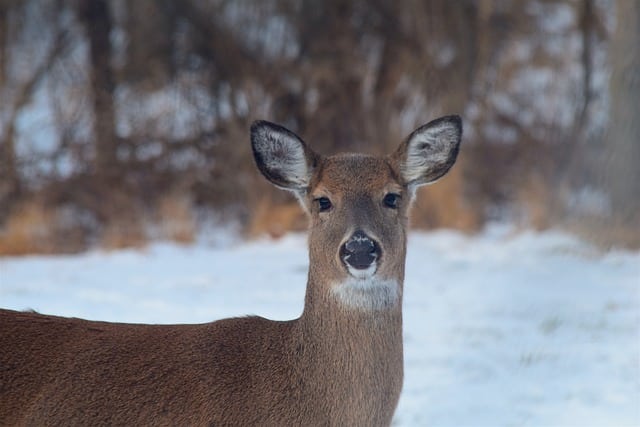
There are often numerous white patches on the sides of the face and sometimes along the side of the body.
The antlers are complex and many-tined.
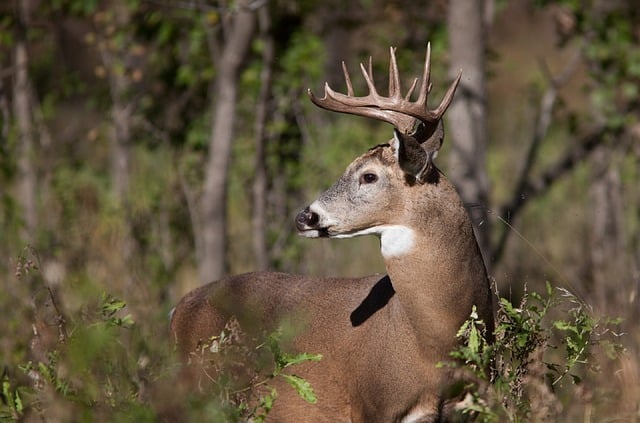
They grow first outwards and backwards, before turning to point forwards and more inwards. There can be up to 15 tines, 3 or 4 of which point backwards.
Habitat
Whitetails are a very adaptable species. Originally a woodland deer, it has adapted well to the changes made to the American landscape by man, and has successfully colonized agricultural areas, and is even found in some urban suburbs.
The clearances of the North American forests and the production of more open forests has benefited the White-Tailed Deer greatly and has led to a large increase in its numbers.
This, combined with the fact that many of Odocoileus virginianus‘ former predators are either now absent or occur at much lower densities than before, meaning White Tailed numbers remain high.
Where do White Tailed Deer Live?
The White-Tailed Deer thrives throughout North America, absent only from parts of the southwest that are too arid for it to thrive.
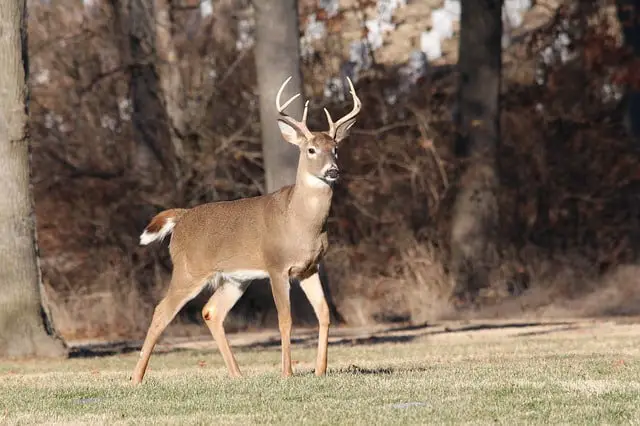
It is most widely spread in the east, and it occurs from the north of Canada, to Florida, and southwards into South America.
Because of their large distribution, many subspecies have developed. Odocoileus virginianus in the cold north grow larger than those in the south.
In Florida the smallest subspecies occur, and these weigh only about 25 kg.
The deer living in the south of its range have a tropical lifestyle while those living further north have lives that are governed by the seasons. Large, vigorous animals thrive in this sort of environment and climate.
Unique Behavior & Habits of White-Tailed Deer
During the winter months the Odocoileus virginianus gather together into large herds of many hundreds. In the spring these large herds begin to break up.
White Tailed Deer can be active throughout the day and the night. When they sense an approaching predator their behavior is very distinctive — they leap away with great leaping bounds lifting their tail high so the white underside is clearly visible.
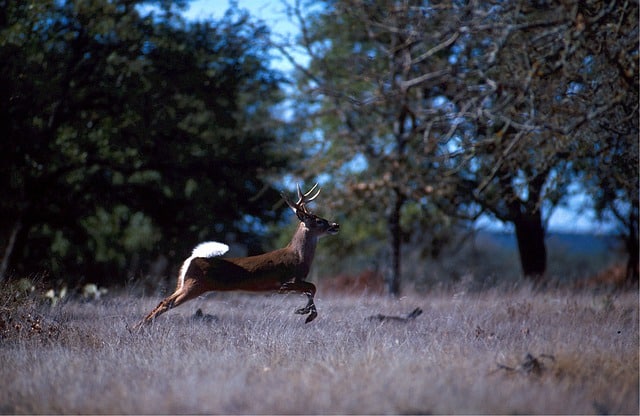
They also emit a distinctive whistling alarm call.
Whitetails have a number of natural predators including wolves, coyote, pumas and jaguars.
The White Tailed Deer’s diet includes grasses and woodland herbaceous plants, they are also a pest species feeding on agricultural crops.
Mating & Reproduction in Odocoileus virginianus
The reproductive cycle of Whitetails varies depending on the geographical location in which they live.
In Northeastern America the rut takes place in November. Farther south, where these deer live in tropical conditions, reproduction can occur throughout the year.
White-tailed bucks fight fiercely during the rut. These deer are prodigious breeders. After a 7-month gestation period normally two fawns are born, but occasionally 3 can be born.
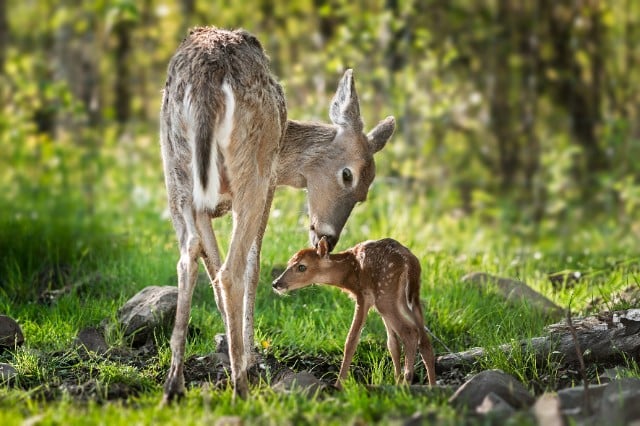
The white-tail fawns remain hidden for the first few days of life. The mother visits each fawn regularly to be nursed.
When they are able to flee predators on their own, they will remain with their mother 24/7. Weaned at 4 months of age, most white tailed deer are not independent until they reach a year of age.

